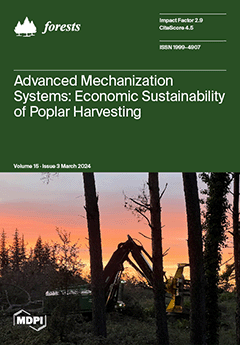Near-surface soil hydraulic properties (SHPs) are fundamental for describing and predicting water and energy exchange processes, particularly at the soil–atmosphere interface, and regulating evapotranspiration, infiltration, and runoff in different ecosystems. In this study, a new method was proposed to estimate near-surface SHPs by combining sensor-based soil infiltrability measurements with inverse modeling using HYDRUS-2D. The infiltration rate (IR) was estimated by combining the linear source inflow method with image processing, and
Ks was estimated from the near-surface steady-state IR (NSIRM). The SWRC parameters described by the van Genuchten model were estimated using the inverse modeling method of HYDRUS-2D for the fitting of sensor-measured infiltration data. Subsequently, the parameters of the van Genuchten model, including
,
, and
, were inversely estimated. Three undisturbed soils, including two stand humus samples from cork oak (
Quercus suber L.) and oleander (
Pinus tabuliformis L.) stands and one sandy loam from a farmland, were sampled near the soil surface to validate the proposed method. The estimated
Ks was evaluated by the constant head method (CHM). The estimated parameters of the SWRC were validated by those determined through the simultaneous measurement of the soil moisture content and water potential using sensor techniques. The results showed that the
Ks estimated from the NSIRM for each soil sample were 23.40 ± 1.21, 23.86 ± 1.83, and 22.99 ± 2.26 mm h
−1, respectively. In comparison, the
Ks determined by the CHM were 24.41 ± 1.53, 24.26 ± 0.37, and 23.81 ± 0.10 mm/h, respectively. The relative errors of the proposed method were 4.14%, 1.64%, and 3.42%, respectively. For the SWRC estimation, the normalized root mean square errors (NRMSEs) between the measurements and the estimates for each soil sample were 0.1724, 0.1454, and 0.0606, respectively. Based on this, the AWC was obtained, and
Ku was deduced from the estimated
Ks and SWRC parameters for each soil sample. In general, the proposed method successfully estimates near-surface SHPs, simplifies the measurement device, and provides a new perspective for the in situ determination of near-surface SHPs under field conditions in the near future.
Full article





